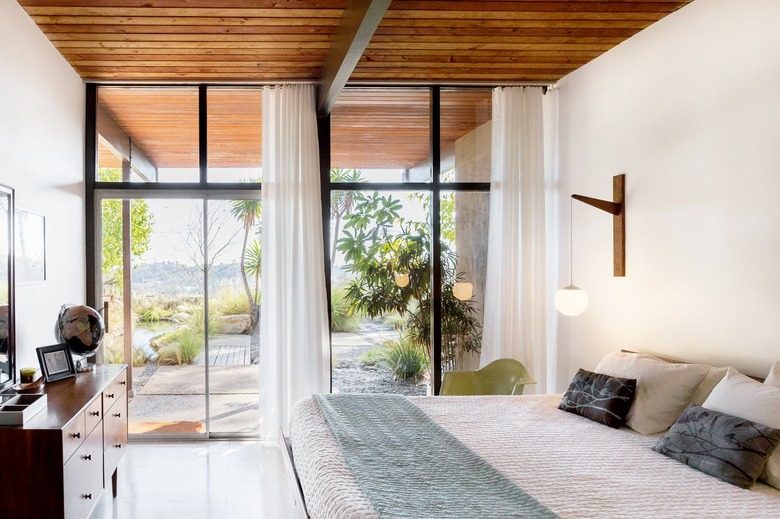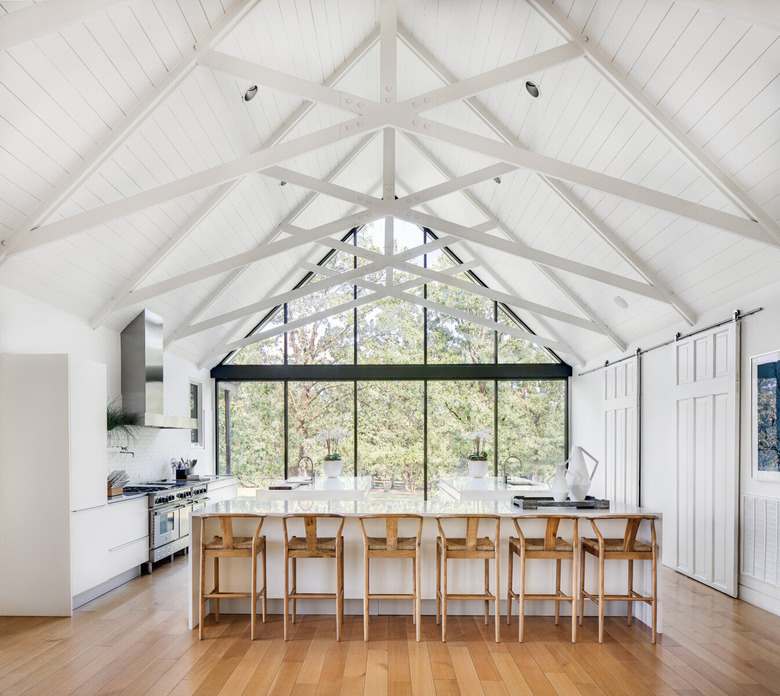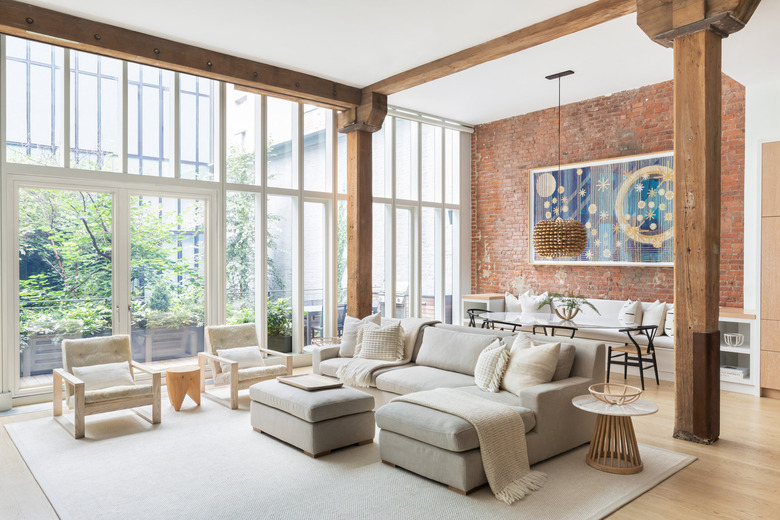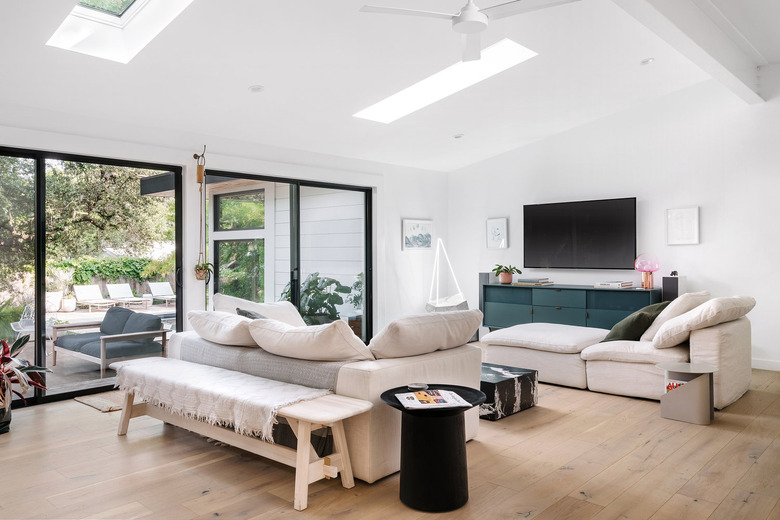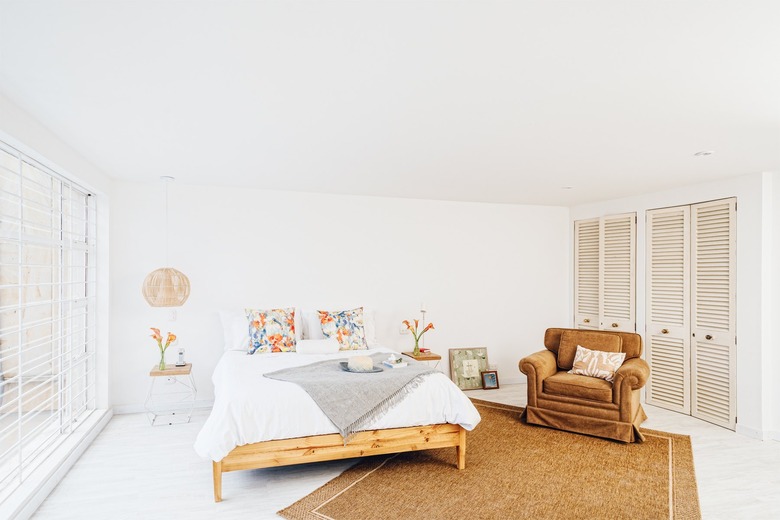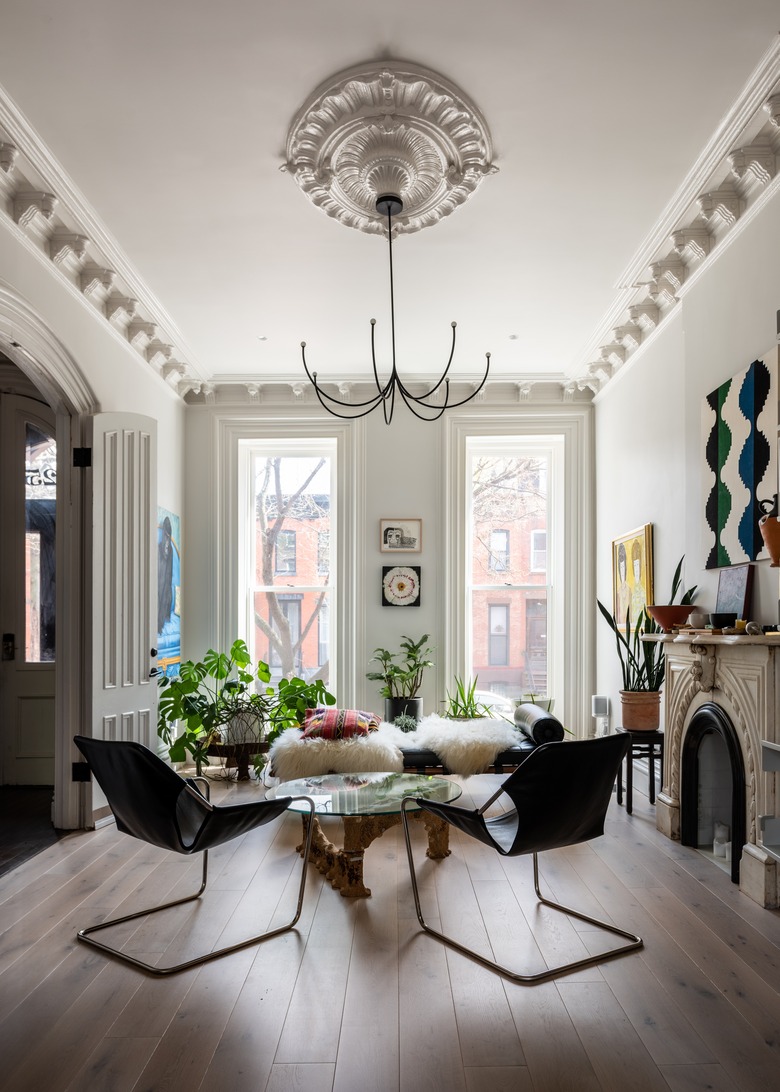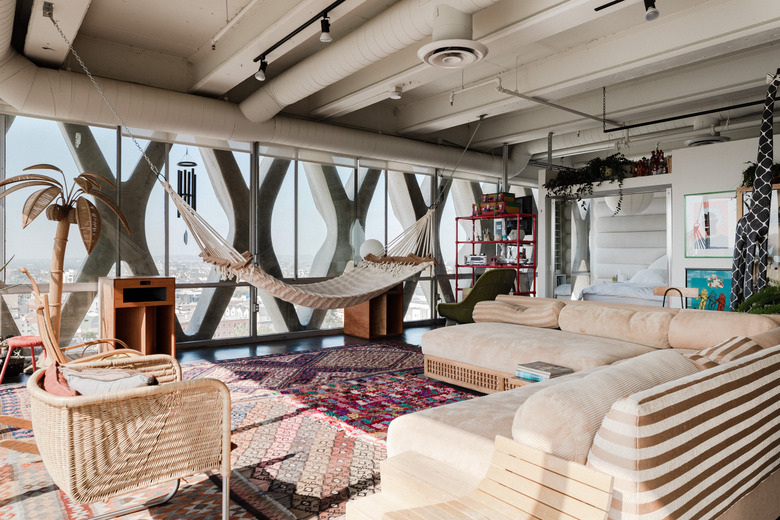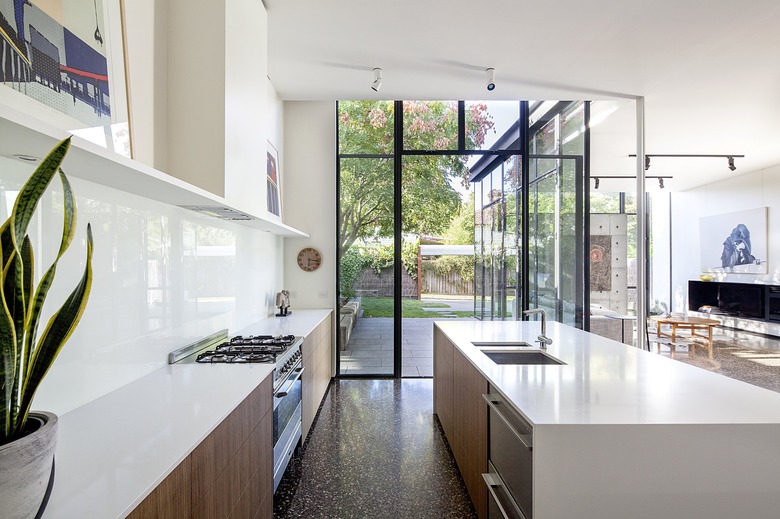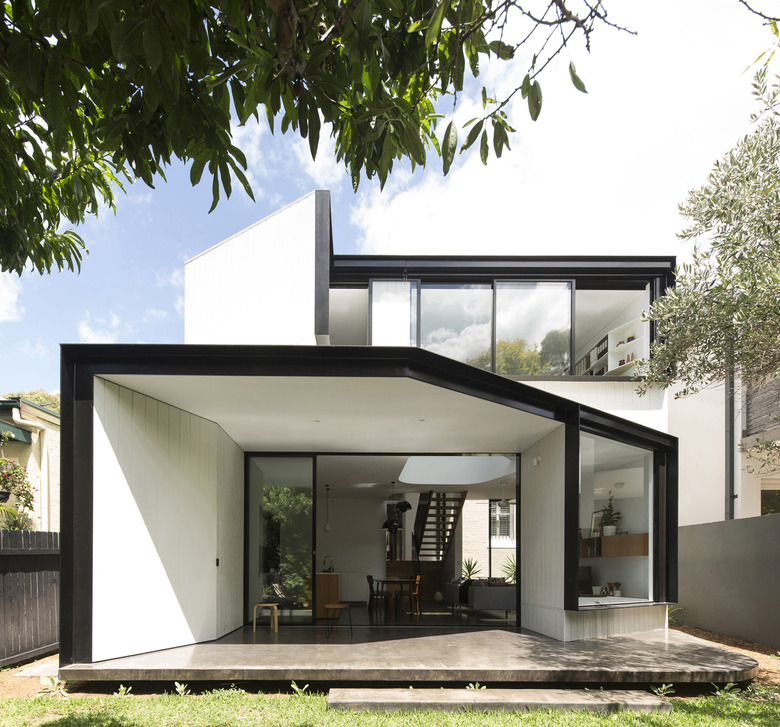10 Floor-To-Ceiling Window Ideas That Bring The Outside In
Few things in life reign as supreme as floor-to-ceiling windows. Their most obvious attribute —being a significant source of natural light — aside, we love them for their ability to invite an unparalleled dose of drama to just about any room they're featured in. A true real estate luxury, they blissfully blur the lines between the indoors and out.
And while you may have a solid grasp on what this iconic design element looks like, we're here to show you that they can pretty much work with any design style and in any space you choose. From the storied traditional to the modern minimalist, the inspired homes ahead prove the versatility and bold decorative qualities of floor-to-ceiling windows. Take a look.
1. Highlight your surroundings.
1. Highlight your surroundings.
Cathedral ceilings are the epitome of desirable real estate traits, but factor in a floor-to-ceiling window and now you really have something special. The exposed beams, sliding barn doors, and masterful chef's kitchen provide this minimalist space, designed by Chad Mellon, with a serious edge. The cherry on top is the wall of windows offering an unrivaled glimpse of the picturesque outdoor scene.
2. Make it a moment.
2. Make it a moment.
The long-spanning wall of windows in this Dumbo loft by Chango & Co. perfectly offsets the modern-industrial aesthetic of the room, all the while lending the urban home a cozy, nature-forward feel. The white trim of the floor-to-ceiling windows not only complements the neutral decor palette, but also contrasts against the exposed brick wall and defining beams.
3. Round out the edges.
3. Round out the edges.
Austin Maynard Architects' St. Andrews Beach project is a lesson in committing to a theme. Tasked with creating a unique seaside home, the team outfitted the majority of the circular structure with floor-to-ceiling windows, allowing complete exposure of its panoramic views. Inside, warm timber doubles as the main source of decor while the furnishings themselves are kept to a bare minimum.
4. Think more is more.
4. Think more is more.
In addition to the numerous skylights in the living room of this Austin ranch, there are floor-to-ceiling windows that provide even more access to natural light. Because when it comes down to it, more is always better. When working with a setup similar to this, be mindful of the furniture outside so that it won't clash with the decor inside, to ensure a smooth and cohesive look throughout.
5. Light the way.
5. Light the way.
The floor-to-ceiling window of Bogotá's Casa Legado not only floods the all-white room with natural light but it establishes a seamless barrier to the outdoors. As far as window treatment ideas go, a sleek set of horizontal blinds doubles as a built-in respite from the mid-afternoon heat.
6. Kick it old-school.
6. Kick it old-school.
This historic Brooklyn townhouse is proof that floor-to-ceiling windows aren't exclusive to strictly contemporary schemes. The intricate molding surrounding the frames complements the original architectural details of the home and emphasizes the grandeur of the windows themselves. Who needs window treatments?
7. Frame the scene.
7. Frame the scene.
Be sure to consider how the framework of your floor-to-ceiling windows will impact your design as well. Take note of this serene bedroom and how the thick, black window trim establishes a defined sense of depth, framing the outdoor views while simultaneously contrasting the neutral elements of the interior with dramatic flair.
8. Look to the exterior.
8. Look to the exterior.
Floor-to-ceiling windows are a given when the exterior of your building comes with added elements, such as the cement latticework of the Wilshire Boulevard building Iris Alonzo calls home. As far as window treatment ideas go, Alonzo opted for fabric roller blinds that fit perfectly and remain concealed when rolled-up. Plus, they played to the contemporary feel of the space.
9. Incorporate a door (or two).
9. Incorporate a door (or two).
You'd never guess that this uber-modern kitchen was part of a 19th century home. And while it boasts many of its original, traditional characteristics, this part of the house is comprised exclusively of floor-to-ceiling windows, complete with doors that open to unobstructed views of the immaculate exterior.
10. Blur the lines.
10. Blur the lines.
To offset the potential sterile nature of a minimalist-contemporary home, establish a seamless transition from the indoors to the outdoors, courtesy of floor-to-ceiling windows that hold very little back. Just follow the lead of this Sydney home and its flawless transition between the two spaces — and bonus points for a lawn or backyard that's well-tended and built out with live greens.
